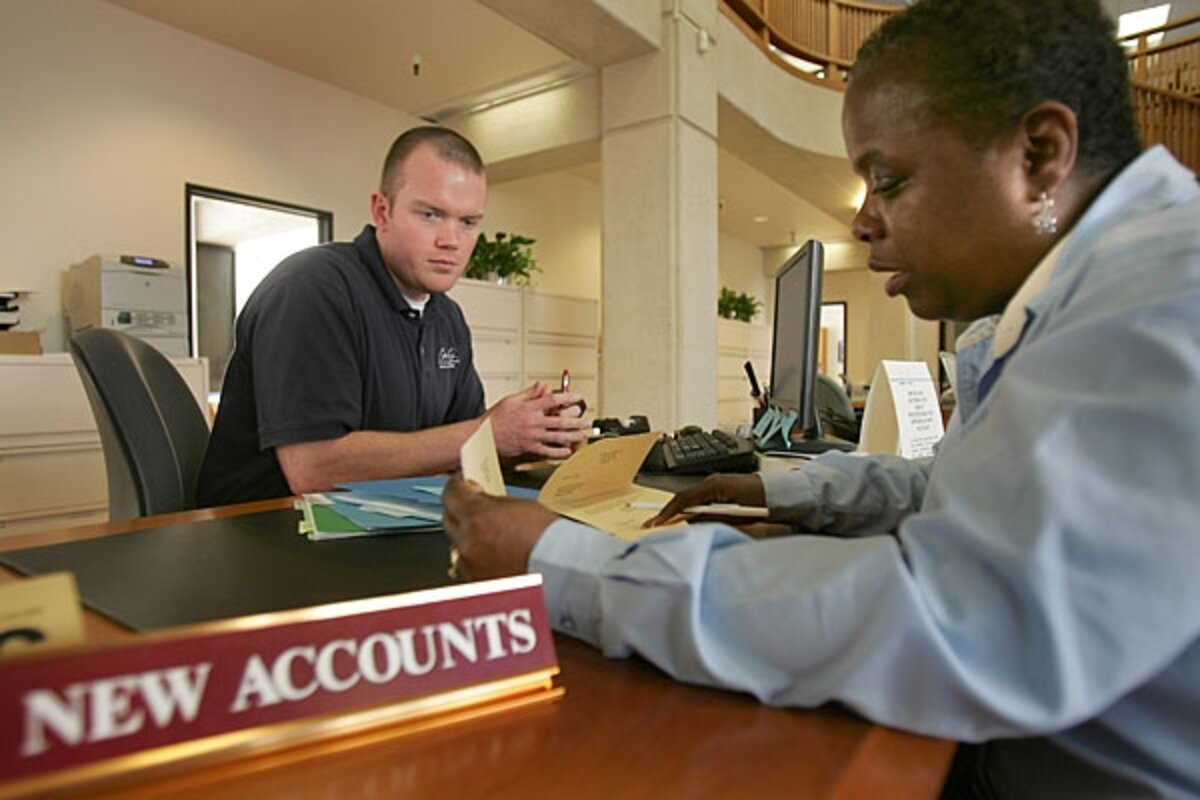As big banks falter, community banks do fine
Loading...
| Wethersfield, Conn.
Despite dire headlines about the credit crunch and the shaky state of financial giants like Citigroup, the vast majority of banks in the United States are doing well.
In fact, many are actually thriving and still making loans to help to grow local businesses and keep families in their homes.
Think of it as a modern-day version of “It’s a Wonderful Life” – the 1940s movie in which local banker George Bailey gives up his own dreams to save his hometown from greedy businessman Mr. Potter.
Today, there are more than 7,000 community banks that are small, community oriented, and determined to keep their assets local.
They’re the Main Street banks, which, unlike those on Wall Street, did not invest in risky mortgage-backed securities or complex derivatives. And so their balance sheets remain relatively healthy.
While they account for less than 10 percent of America’s total banking assets, their traditional, values-based approach contains plenty of lessons for their larger Wall Street counterparts, some analysts say.
Some also question the wisdom of allowing a few big banks to control large percentages of the US banking sector.
“Mr. Potter must be spinning somewhere in his celluloid grave,” says John Steele Gordon, a business and financial historian in North Salem, N.Y. “The community banks are doing well because they were willing to adhere to sound banking principles. They didn’t get caught up in the Wall Street craze and were less driven to keep those quarterly earnings going up and up and up.”
Yet the community banks are interested in making a profit. Like the Connecticut River Community Bank, which had its best year ever in 2008, most do it in the traditional way: They focus on their “net interest margin” – the difference between the interest earned from loans and investments they make, and the money paid out to depositors.
But there’s another component as well, says William Attridge, president of the Wethersfield, Conn.-based bank: Most community bankers know their customers.
“We’re lending to small businesses, and in small businesses the individual is a significant part of that,” he says. “There’s a character component: That means we might make loans that possibly someone else wouldn’t if they just looked at the financials, because we know the individual well and what their resources and talents are. On the other hand, there are probably some [loans] that look good on paper that we wouldn’t make.”
During the Great Depression, there were more than 30,000 banks in the US, and most of them were small. The majority of banks that failed were small, while the few bigger banks that existed weathered the economic turmoil better.
Today, the flip side is happening. Four large banks were responsible for half of the $26 billion in losses reported by the banking industry during the fourth quarter of 2008, according to the Federal Deposit Insurance Corp. (FDIC).
“What troubles the community banks is that the whole banking industry is being painted with this broad brush as the bad guys, and they aren’t: They didn’t make those risky investments. They’re out there playing by the rules,” says Karen Tyson, a spokeswoman for the Independent Community Bankers of America in Washington, D.C.
The health of smaller banks has allowed many communities to continue with business as usual despite the national credit crunch. Jeanne Morrissey is a builder in South Burlington, Vt., who uses the Merchants Bank, a statewide bank.
“You wouldn’t know at all there’s an economic crisis at my bank,” she says. “We have not seen a shred of difference in terms of available money.... All of my lines of credit have held. In fact, the bank has even offered to do more.”
But as the recession continues, these community banks are also coming under some pressure. Although more than a third of community banks reported profits during the fourth quarter of 2008, according to the FDIC, just under a third reported net losses.
Several small banks in states like California and Florida that were hit particularly hard by the real estate crash have also been forced to close. But in general, community banks still have healthy balance sheets.
In Vermont, the Merchants Bank was founded in 1849, and its motto is “Vermont Matters.” For the past 12 years, it’s tried to prove that by keeping most of its assets in state. “Every single loan that we make we hold in our own book. That makes us much more risk averse,” says Mike Tuttle, president and CEO.
As a result, the bank’s “No. 1 priority” is to make sure the loans they make are appropriate for their customers.
“We want to make sure that our customers can repay them because it doesn’t do either of us any good to put them in something that they may have difficulty with,” he says. “We want them to succeed.”
Of the thousands of mortgage loans on their books, only four are in foreclosure.
Many small banks do sell mortgages on the secondary market to the Federal Home Loan Mortgage Corp., known as Freddie Mac. But most, like the Union Bank & Trust Co. in Evansville, Wis., also retain the servicing of those loans.
“So if a customer has a problem or question about their mortgage, we can answer that question from right here at our desks,” says Chris Eager, president and CEO.
Like many other community bankers, Mr. Eager is “adamantly opposed” to the bailout of the big banks. “This ‘too big to fail’ is absolutely ridiculous,” he says. “We know that if we lose money and manage our business irresponsibly, we have to close.... So it tends to make you watch the expenses and be a little more careful than you otherwise would.”




